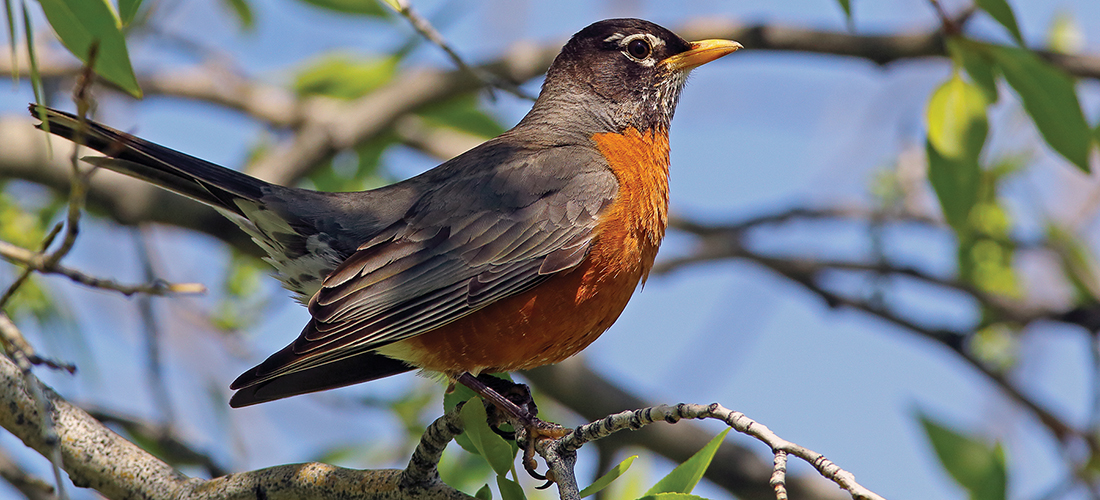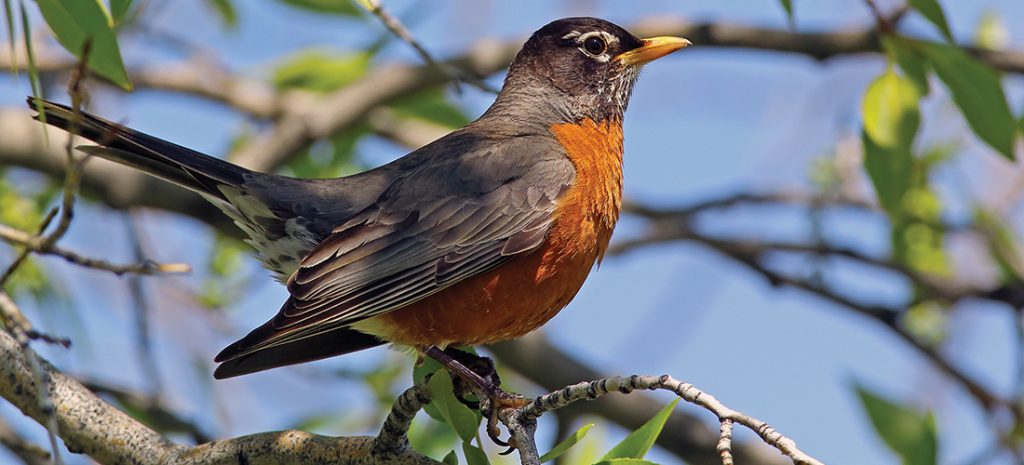A traveling treasure of daylilies
By Claudia Watson
Photographs by Laura Gingerich
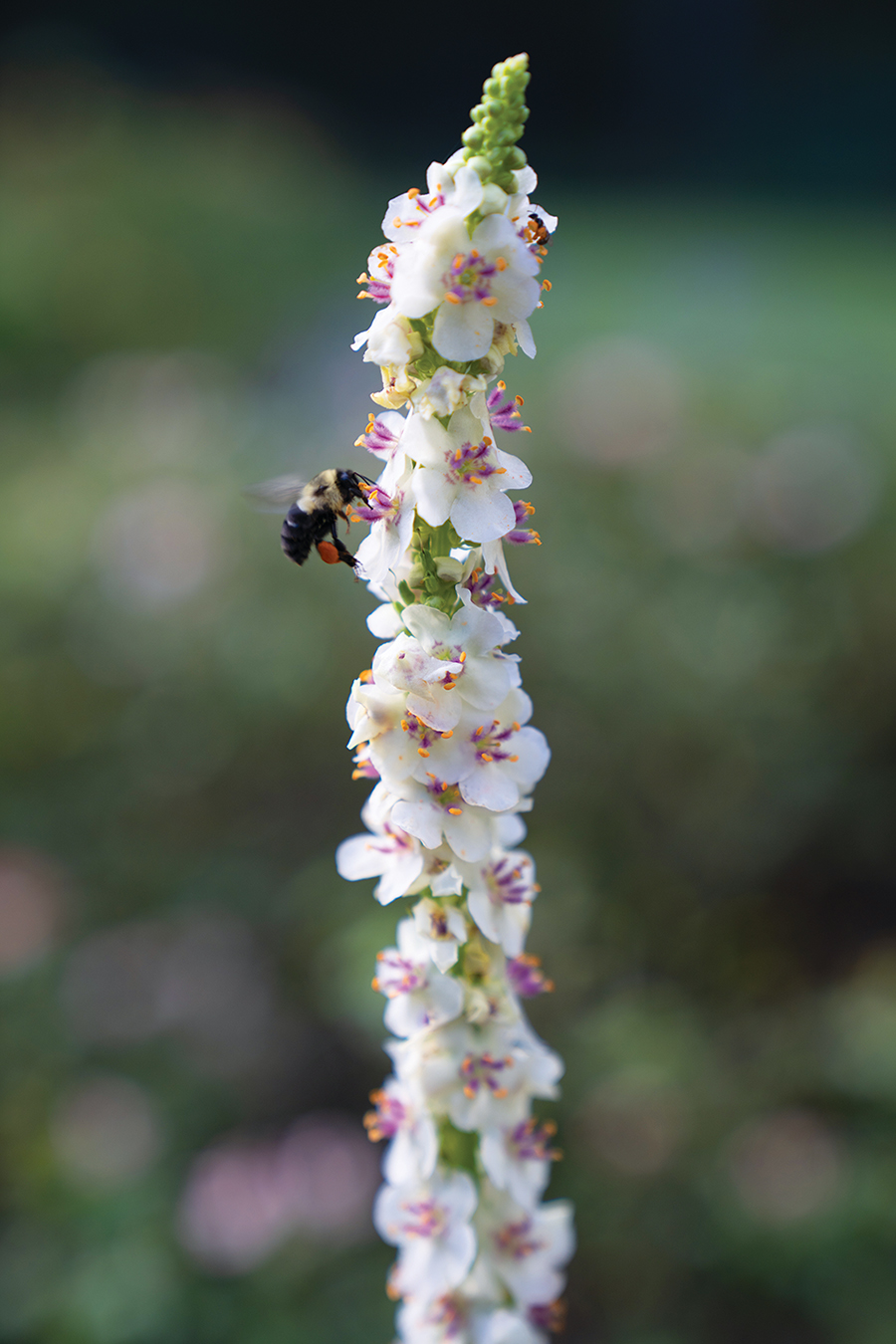
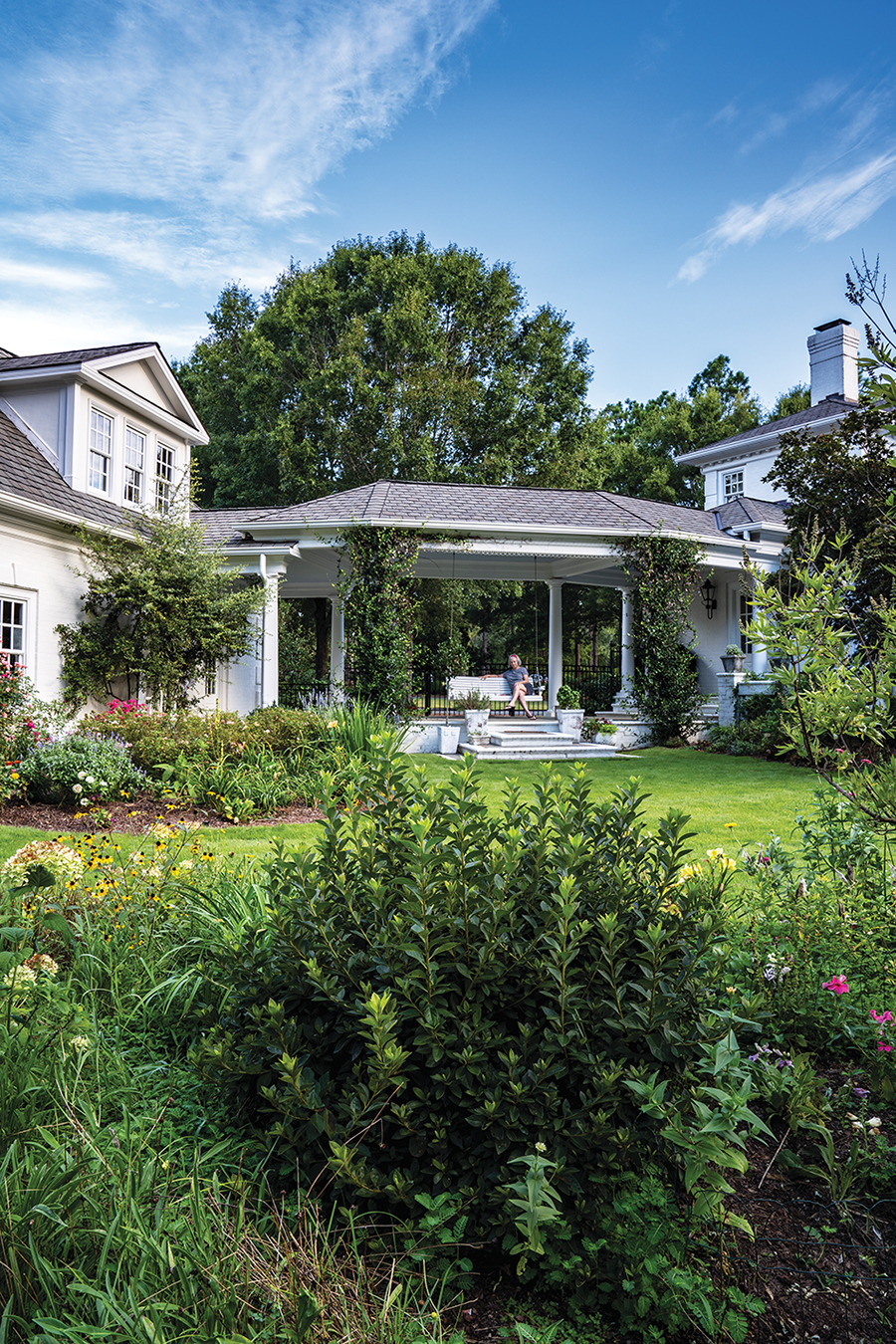
Her grandmother’s old rambling garden was dense with daylilies, irises and roses — all bought with saved-up egg money and purchased through mail order.
As a young girl, Julia Connelly visited her maternal grandparents’ farm in Calypso, in eastern North Carolina, where rural life was rich with sensations reaching every direction. She’d spend hours scrambling through the farm’s massive pecan groves and the grapery, watching the livestock, and learning to loop tobacco. But none of that compared with the delight she found in her grandmother’s garden.
“I’d cut flowers for her kitchen table,” she says, looking into the distance. “She taught me how to separate the daylily and iris clumps, and we’d plant them where she wanted them. I’d have dirt under my nails for days.”
Gardening became a constant thread in Julia’s life, and daylilies followed her. She attended Peace College and later graduated from the University of Georgia with a degree in art and interior design. While working as a designer in High Point for Burlington Industries, she met Dan Connelly, a financial executive working in Greensboro for Westinghouse Credit Corporation. They enjoyed a long courtship, but when the company offered Dan a quick transfer to Orlando, they decided to marry and move — all within a month.
“I finally gave up trying to work,” she says of the frequent challenges of relocations, first with Westinghouse and then when Dan joined Citibank. But she didn’t give up her daylily collection — the precious cargo moved with her to their homes in Orlando, Pittsburgh, Atlanta and then, California.
“I dug every clump and boxed them up for the moving truck when we moved to California,” she recalls. “I amassed quite a collection.”
Soon, Dan’s career with Citibank took the family, with three babies, overseas. Korea was the first of 27 consecutive years of international postings, including Indonesia, Russia, Kazakhstan and Africa.
“We always had a garden because Dan knew that was really important to me. They were gardens with lots of grass for the dogs and kids to play,” Julia says. “Our family always had a great house because he made sure of it.”
Her overseas gardens were as diverse as the locations. Their home in Jakarta was set under the dense shade of tropical heat-loving clove, mango and rambutan (Nephelium lappaceum) trees. There, a family of civets, native to the tropics, took up residence in the ceiling of their home, undoubtedly enjoying the proximity to food, including the fruit and seeds in the garden, and snakes and lizards.
Russia offered a dacha for a year in the exurbs of Moscow, which sparked Julia’s impetuous style. “It was a fun garden and raw dirt, and I took it from top to bottom in one year,” she says, savoring the accomplishment. “It was fun to research what plants would live there.”
Later they moved to an apartment overlooking Patriarch’s Ponds, a welcoming patch of green surrounded by a wide footpath and benches in central Moscow. “I missed my garden there, but I walked that park every day with the dog,” she says.
Then onto landlocked Kazakhstan, where its ancient mountains were the source of rich soil. With an arid climate, the location offered an ideal environment for planting irises and roses, and a yard full of fragrant lilacs.
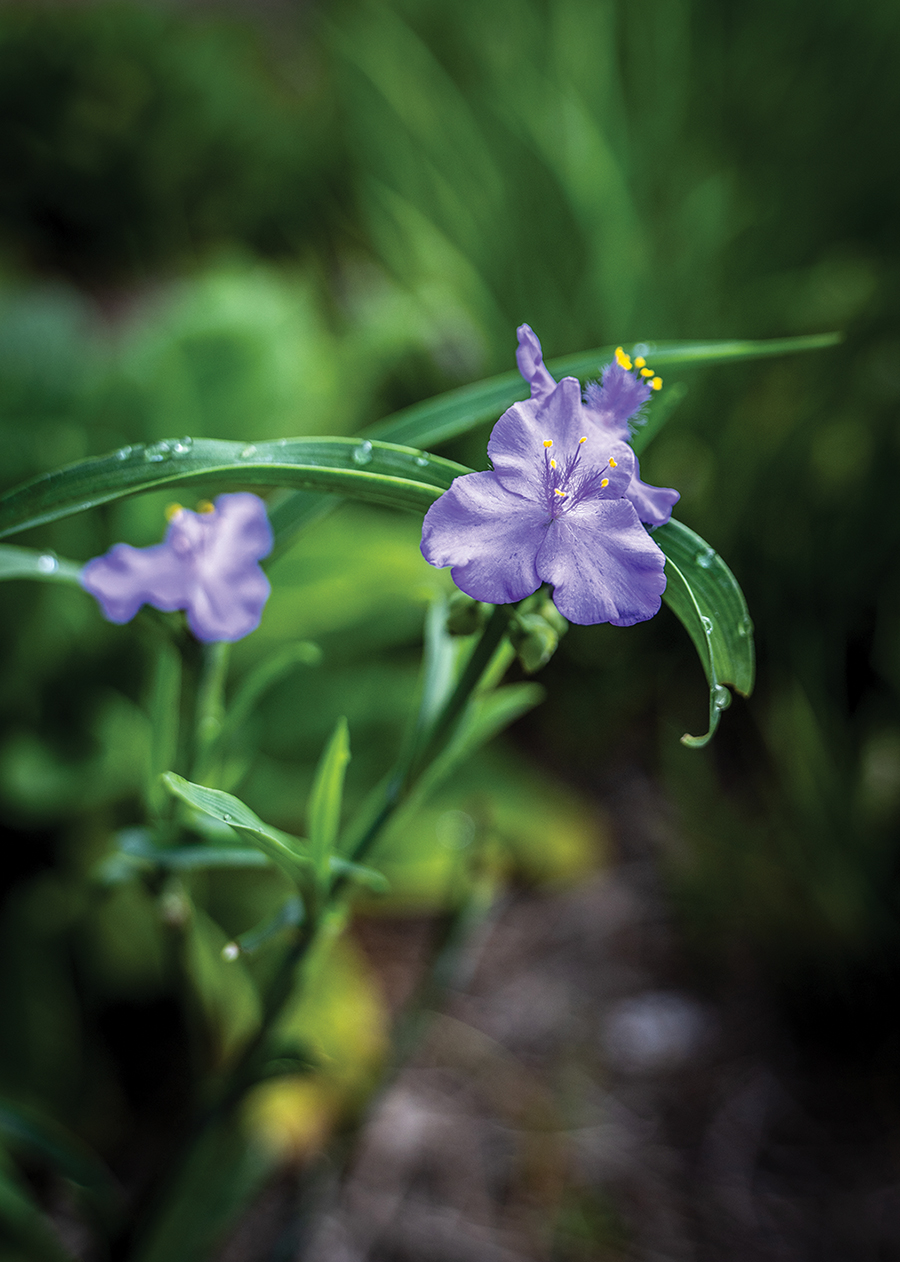

.
Their compound in Nairobi, Kenya, had massive old trees, including travelers palms (Ravenala madagascariensis) spreading their large fan-like leaves; and fruit-bearing guavas and mangos that attracted monkeys. “Despite the best intention of our security patrols and their dogs, a troop of monkeys would jump from the trees onto our roof and keep everybody crazy,” Julia laughs.
Of all the locations, Nairobi became her favorite. “The flowers were beautiful. We had lily of the Nile (Agapanthus africanus), showy bromeliads, lots of colorful orchids, and the indigenous bird of paradise (Strelitzia),” she says. “I loved growing the huge sexy staghorn ferns (Paltycerium bifurcatum) that I’d tie up in the trees. They were amazing.”
While still living in Moscow, the Connellys were determined to find a place to provide American roots for their children. So they purchased land and a large cabin at the top of a mountain near Deep Gap, not far from Boone, North Carolina, accessible only by a winding rough logging road.
“It was so remote and so beautiful,” recalls Julia. “I was excited to finally have my own garden. But deer were everywhere. They had the forest to eat but ate my garden. Little did I know. So I adapted and didn’t have a garden.”
The quiet country life, beautiful scenery and laid-back lifestyle made their mountain place a respite through their many years on the move. Then, in 2015, they began searching for a home in Pinehurst. They drove up a short asphalt access road to a house in the Country Club of North Carolina. “You couldn’t see the house from the street or the access road; it was heavily landscaped and overgrown,” she says. “But when we drove up to the entry, saw the house and those massive willow oaks, we both stopped and looked at each other.”
Forever home.
“We moved every two to three years and lived all over the world and in other people’s houses,” Julia says, looking out at the land. “This was the first place in my life, and Dan’s, because he loved it, that we called our own.”
When they settled into their home, located on 5 acres between the sixth tee and 14th green of CCNC’s Cardinal course, they wanted to rejuvenate the landscape to reclaim the beauty of the mature trees and existing azaleas, rhododendrons, camellias, cryptomeria (Cryptomeria japonica) and hollies. They hired out for tree removal, but soon realized they needed knowledgeable and regular help with the landscape. So they hired Lawrence and Elizabeth Brown to renovate the wildness that had become too much of a good a thing.
“There was a 25-year-old master plan for the grounds, and it was planted very purposefully by the previous owner. But these plants had been here from forever and long ago,” says Elizabeth, who holds a Bachelor of Science degree in horticulture and landscape design from North Carolina State University. “There was no plant maintenance to control growth, and somewhere in all those years there was a lot of random planting, particularly of invasive vines and other plant species.”
She and Lawrence, a graduate of Sandhills Community College’s horticulture program who also holds a certification in turfgrass management from the University of Massachusetts Extension, took their time carefully assessing each area of the property.
“There is so much land that it took a year and a half,” says Elizabeth. “We looked for the value that was already invested in the landscape.”
The Browns worked to rejuvenate and reshape plants rather than simply replace them. “Most areas needed restorative pruning as well as improved soil,” she says, adding that the effort took patience. “We carefully retained the large structural plants and trees, but in some cases, we edited, stripping out entire sections of overgrowth or unhealthy plants, to give us a clean canvas.”

With that action plan underway, the Connellys set a path to restore the landscape and bring it a fresh vision. But then, their forever home forever changed.
Dan was diagnosed with cancer and died in 2019.
Julia, now alone, says, “You just do what you have to do,” referring to moving forward in life. While walking through the backyard one day, she says, “I realized what I had going on in the yard was not interesting, and I decided to make it into what I wanted.”
She had always loved gardening, but also the water. “I wanted a lap pool and a place for my kids, grandkids and me to kick around for some exercise. I also wanted to give my daughter, who is handicapped, a place to enjoy with me.”
She met with Ricky Britt of Spa and Pool World in Fayetteville, who assessed the area. He recommended she enlist the assistance of Matt Ramsey, a well-known landscape architect, due to the problematic dimensions of the site.
Ramsey says of their first meeting, “She knew precisely what she wanted, but unfortunately, there were issues with setbacks on the golf course, fences, permits, and things like that. It gets involved.”
But Julia was determined, and Ramsey made it work. The extensive plan included the pool with sloped beach access to make entry more accessible, a spa, fire pit, pergola and a formal garden — all within view from the back of the home and framed by zoysia turf to give the grandchildren and dogs plenty of play space.
Then COVID hit. “It took the wind out of everything,” says Ramsey. “Between the loss of workforce, manufacturing delays and supply chain issues, it was a difficult time.”
The project took about a year and a half. Landscaper Richie Cole, the owner of Knats Creek Nursery in Jackson Springs, was tapped to construct the hardscapes. The Browns’ work continues as they plant the new beds around the pool and maintain the home’s landscape. Julia says working alongside Elizabeth each week for a couple of hours is the best part of the day. “We talk about family, work hard, and laugh a lot.”
Despite Julia herself being diagnosed with cancer late in 2021, the project continued. “She’d sit at her window watching us or go out and piddle around in her garden,” says Ramsey, also a cancer survivor. “I think having us bang on her door every day was therapeutic to her. I really admire her. She didn’t sit around feeling sorry for herself. Instead, she stayed actively involved with the project.”
It’s sunrise, and a single fluffy cloud glows red, casting a rosy-hued blush on the Connelly landscape.
Sipping her morning coffee, Julia sits on a porch swing on the covered breezeway framed by fragrant evergreen confederate jasmine (Trachelospermun jasminoides) vines. It’s a retreat that overlooks her garden, where she plays with her two dogs, Ace and Tripod, and listens to the songbirds, watching them fly tree to tree.
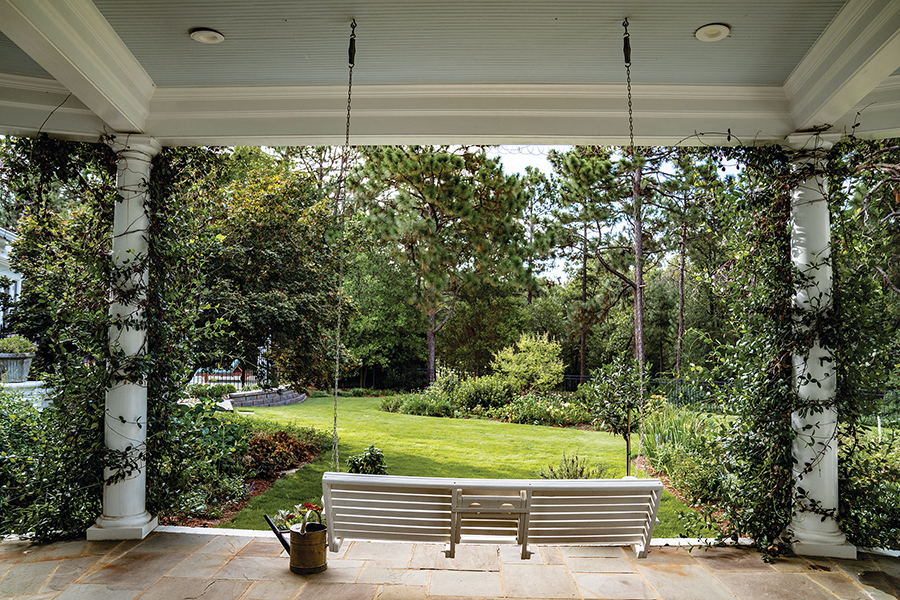
The breezeway garden is the showiest of the garden rooms. It offers a relaxed and tousled vibe with a canvas of brilliant yellows and oranges, pinks and reds, and blues to match the sky.
“We moved our entire life. So, this is my garden, my way, and I love it,” she says with certainty while showing me the way. With a clean bill of health, Julia is plotting changes to her spring garden and new ways to annoy the deer.
“I’m going to remove those,” she says, pointing to lifeless limelight hydrangeas munched on by the resident herd. “Those aren’t going to work here, despite my fence. I’ll find something their tastebuds don’t like.”
Here, annuals are interspersed with perennials and shrubs for continuous color throughout the growing season. Carefree daylilies, not surprisingly, have made their way back into Julia’s life. She combines the vigorous perennial with other plants rather than in separate beds.
With daylilies, Julia’s a bit like a kid in a candy store. When she sees one she likes, she’ll buy it or, in some cases, dig it out of a ditch. A self-confessed “country girl” and plant forager, she says with a wink, “It’s more fun.”
The botanical name for the daylily, Hemerocallis, means “beauty for a day.” Most daylily flowers open in the morning and die by nightfall. However, all daylilies have a rapid growth rate, including the ubiquitous tawny orange “ditch lilies” (Hemerocallis fulva).
“One of the reasons I moved inside the fence with my garden was so I could have my daylilies, but the deer found them, too, and ate all the flowers,” she says, adding that she uses a liquid deer repellent weekly, which helps. “I do love my daylilies, especially when I’m the first one to discover them.”
A good-sized daylily plant can produce hundreds of blossoms over several weeks. Its foliage appears in early spring and remains for months before the flowers bloom. After flowering, all daylily foliage goes through a tatty phase and can be trimmed by half. Soon, new leaves replace the old, conveniently filling vacancies in the garden.


Annuals and a diversity of native perennial and pollinator-friendly plants known for their exquisite colors, fragrance and hardiness fill Julia’s garden. “Look, these are huge,” she says of her zinnias.
“I love cutting and bringing them into the house every day,” she says while clipping the stem above the leaf node to encourage new flowers.
Within view of her porch swing is a bright orange flower that she says is a favorite of her hummingbirds, a blackberry lily (Belamcanda chinensis or Iris domestica). “I got the seeds from Elizabeth and scattered them,” she says. “Now I keep the pods to share seeds,” offering me a pod. Also referred to as leopard lily, blackberry lily is a perennial iris with wiry stems that may grow up to 4 feet and sprout bright orange and red-spotted flowers, hence the nickname.
An asymmetrical island bed near the breezeway is anchored by azaleas and a newly planted lilac chaste tree (Vitex angus-castus), a replacement for a faltering old Japanese maple. Fritillaries and swallowtails make arcs around the showy coneflowers, lantana, scarlet bee balm (Monarda) and zinnias, alighting, again and again to feast on the abundant nectar.
Nearby, the blue-green pool looks inviting. Still, only tiny sea turtles, mosaic tiles on the bottom of the pool, are enjoying it.
Along the curved bluestone walk adjacent to the pool is an herb garden, deemed the hottest spot in Moore County by Elizabeth due to the full sun exposure and the heat radiating from the stone. Here, a graceful teak Lutyens bench purchased decades ago in Indonesia offers a relaxing spot to watch the native bees and skippers buzz with affection over the fragrant lavender, rosemary, ornamental onion and salvia.
It’s a short stroll to the side of the home, where a dreamy allée of majestic crape myrtles (Lagerstroemia indica) provides a cooling retreat. These trees, planted 25 years ago, form a towering canopy bent low by the weight of their pink blooms. “You don’t see this often,” says Elizabeth. “They’re magnificent, especially when they’re in bloom.”
Julia’s daughter took this path in her wedding gown on the way to the home’s terrace where she was married. “You can’t imagine how beautiful that moment was for me,” says Julia, later sharing the wedding photo with me.
In the moist-to-dry woodland area of the allée, azaleas, periwinkle (Vinca minor), Lenten roses (Hellebore) and ferns co-exist with a tropical-looking Asian native plant that resembles a hosta. “Take a peek in here,” Julia says while pushing aside the broad green leaves of a Japanese sacred lily (Roheda japonica). “The fruit looks like a tiny pineapple with red berries.”
The upright vase-shaped clumps of the lily are slow-growing, making it a perfect stand-in for hostas in a shady area, and as Julia says with glee, “It’s not deer food!”
The full-sun areas of the landscape are a gardener’s paradise. The thick green carpet of zoysia grass gives character and dimension to the home, the plantings and the structures around it. Soft boxwoods, flowering camellias (Camellia sasanqua), dense spreading yews, ferns and liriope form the foundation plantings. Flanks of yaupon hollies line the poolside and golf course edge of the property, providing a background of dark green for the colorful flowers.
“We hand-tip them as needed and don’t use the hedge trimmer,” says Elizabeth. “That type of care keeps the plant healthy and gives it a much softer, natural appearance.”
The space is filled with native purple beautyberry (Callicarpa americana), red twig dogwood (Cornus sericea), redbuds, and tough beardtongue (Penstemon), which Julia lets spread in this wild area of the property. In addition, Mexican bush sage (Salvia leucantha), a shrubby perennial prized for its dense, willowy arching stems and lavender flower spikes, lights up areas closer to the access road.
“It’s what I’ve always wanted for a garden. If I see something I like, whether it’s at Walmart, a garden center or a catalog, I’ll plant it and give it a try,” she says. At that moment, I look down and see several blooming daylilies at our feet — surprisingly undiscovered by the deer — and look up to see her smile.
Daylilies are strong, adaptable, and vigorous, like Julia.
Claudia Watson is a frequent contributor to PineStraw and The Pilot and finds joy in each day, often in a garden.

 April is a quivering brood, a bellyful of earthworms, a fledgling’s maiden flight.
April is a quivering brood, a bellyful of earthworms, a fledgling’s maiden flight. 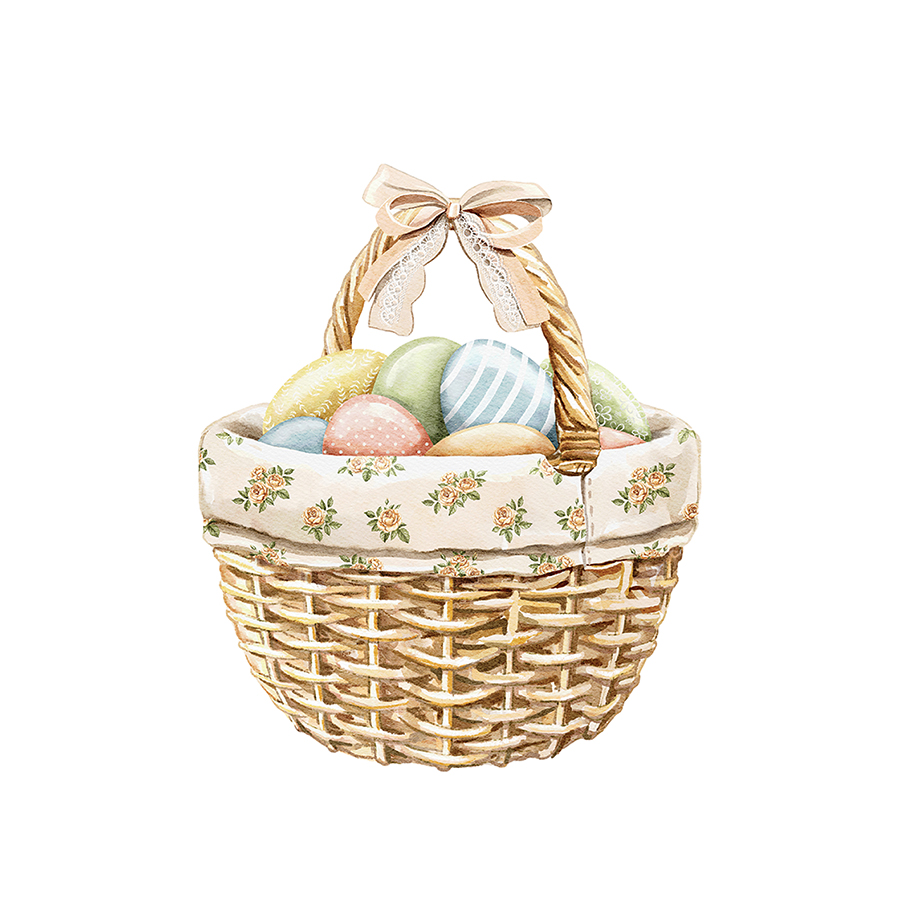
 According to Smithsonian magazine, the Lyrid meteor shower is one of the 10 most “dazzling” events for stargazers in 2023. This year’s shower peaks on Saturday, April 22 (Earth Day).
According to Smithsonian magazine, the Lyrid meteor shower is one of the 10 most “dazzling” events for stargazers in 2023. This year’s shower peaks on Saturday, April 22 (Earth Day). 

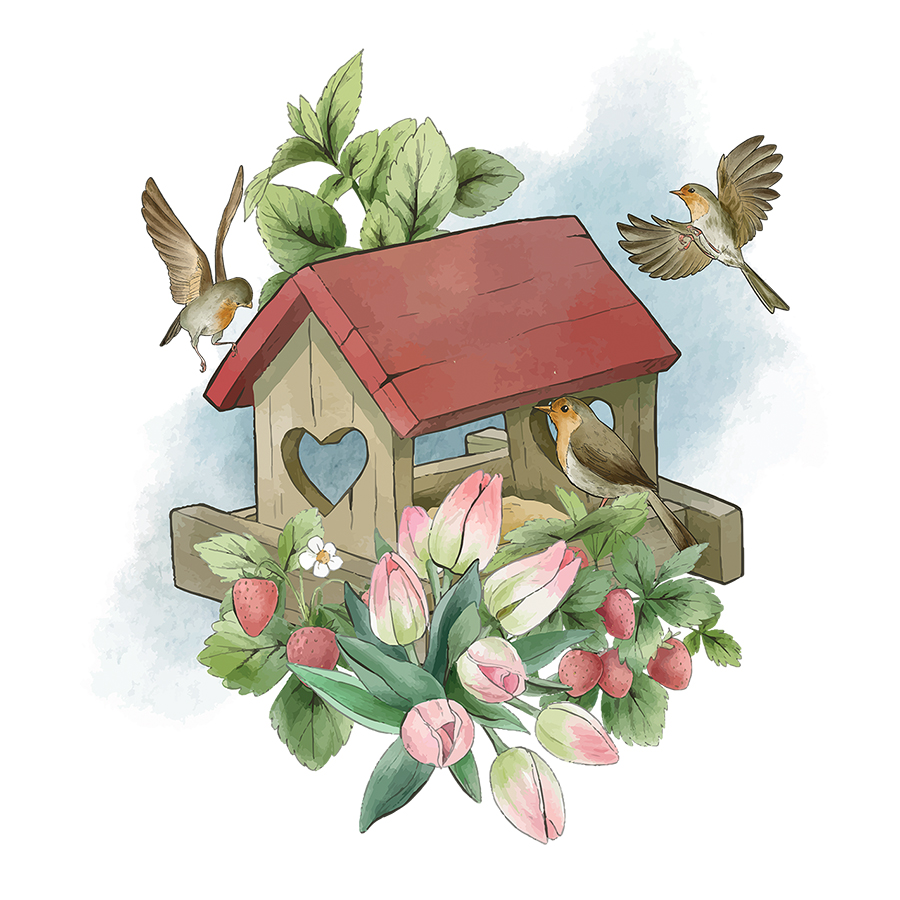




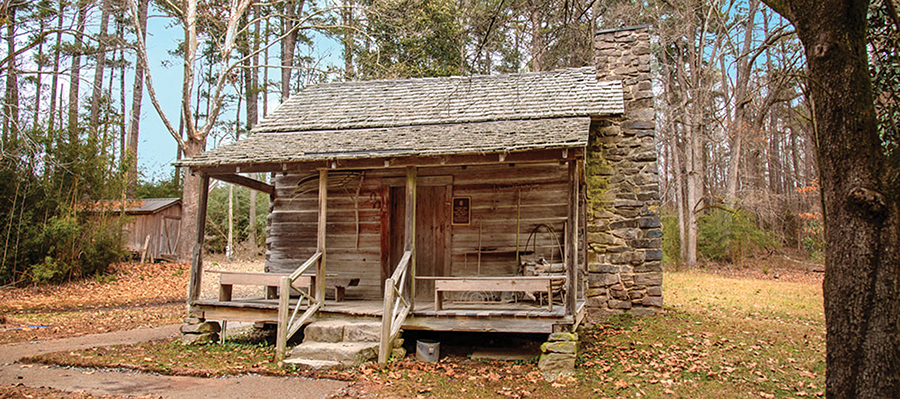

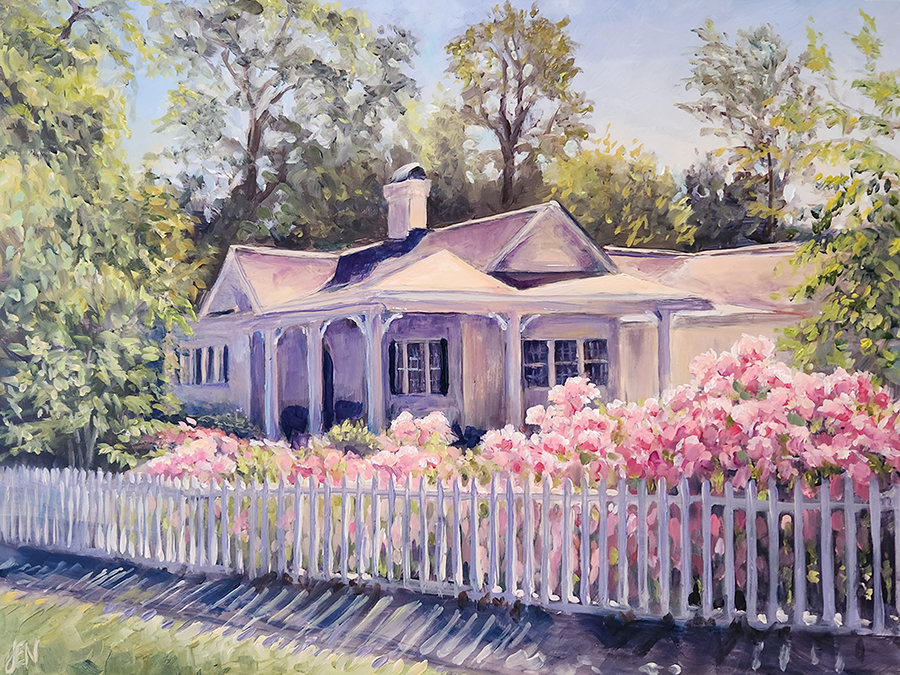
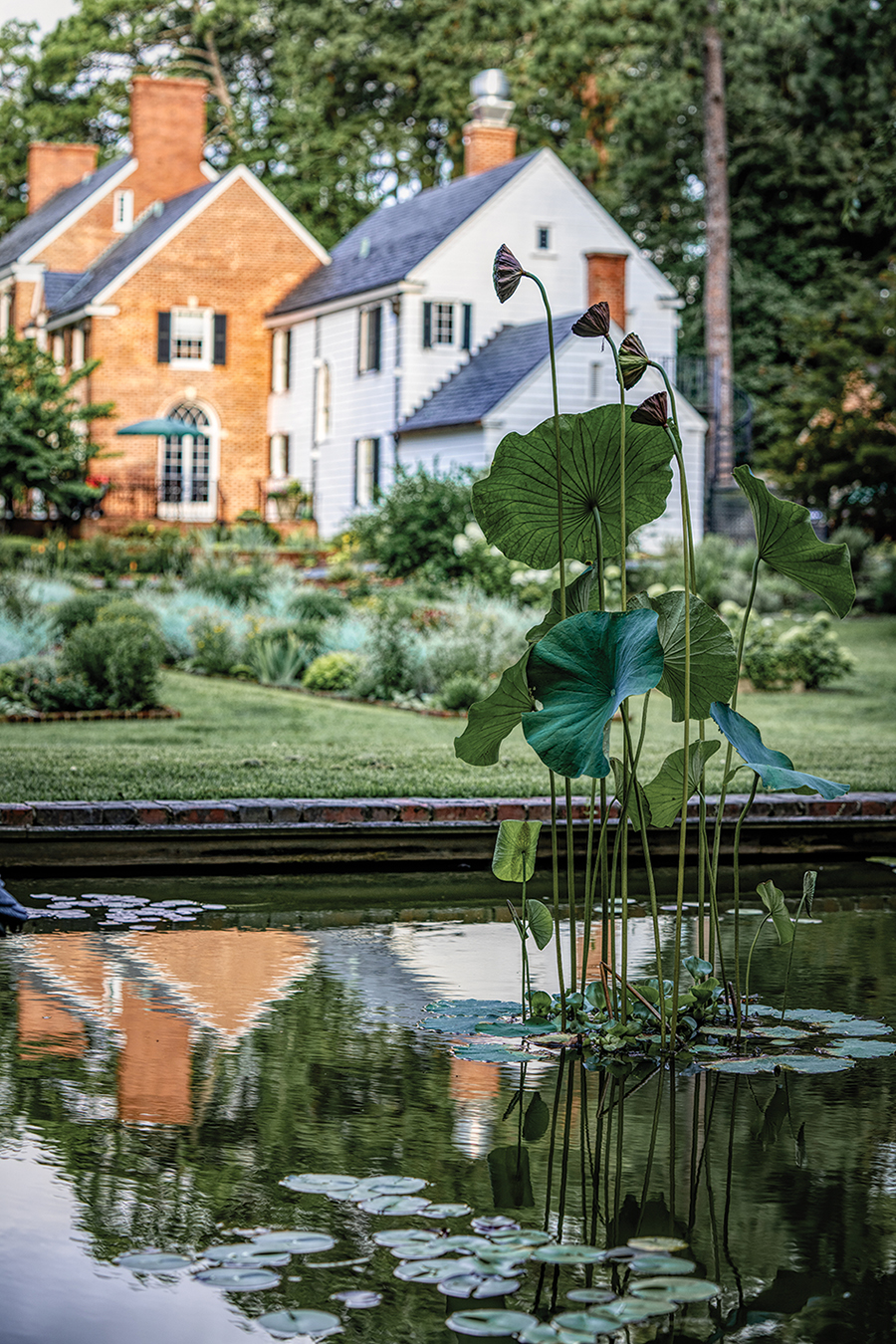


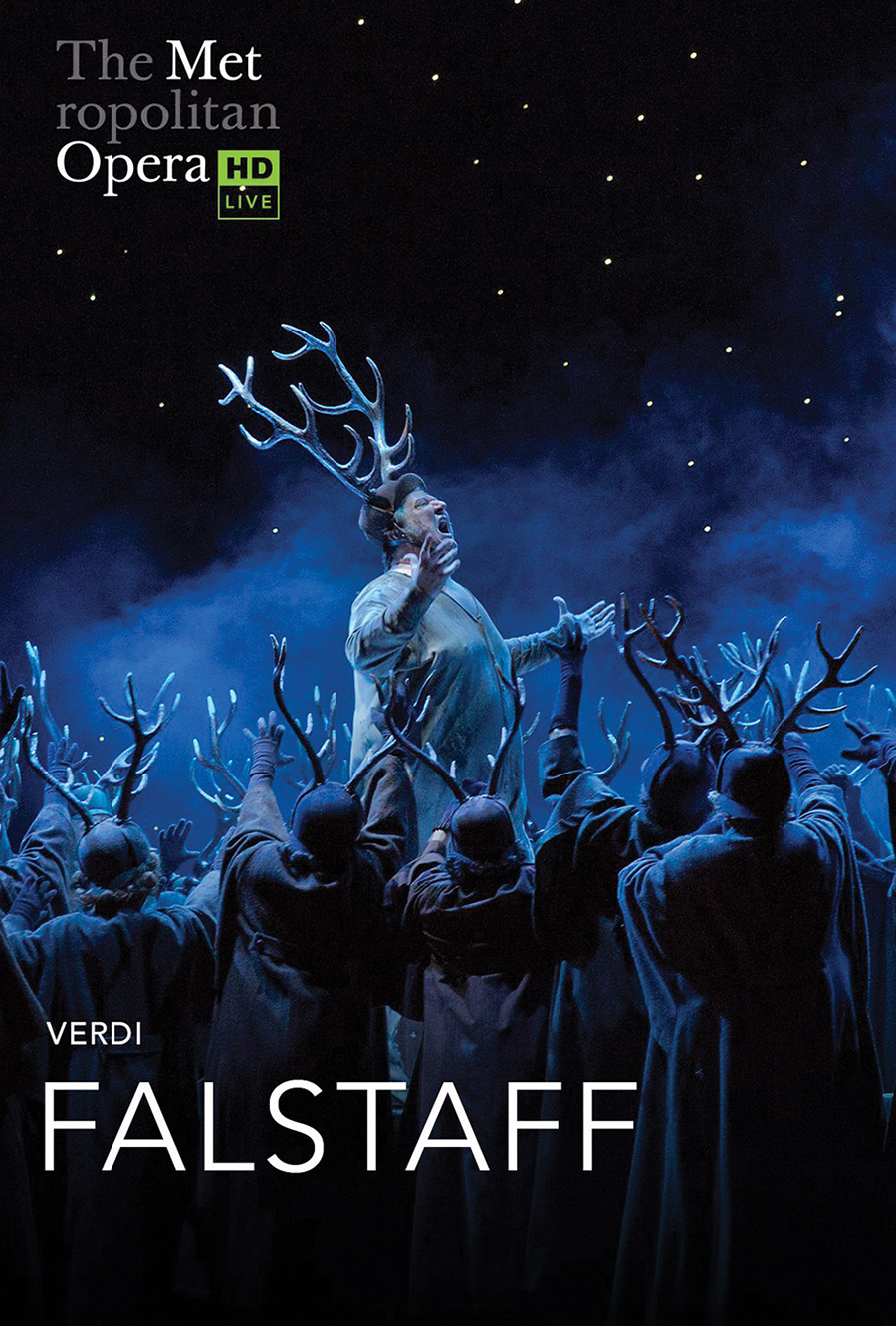


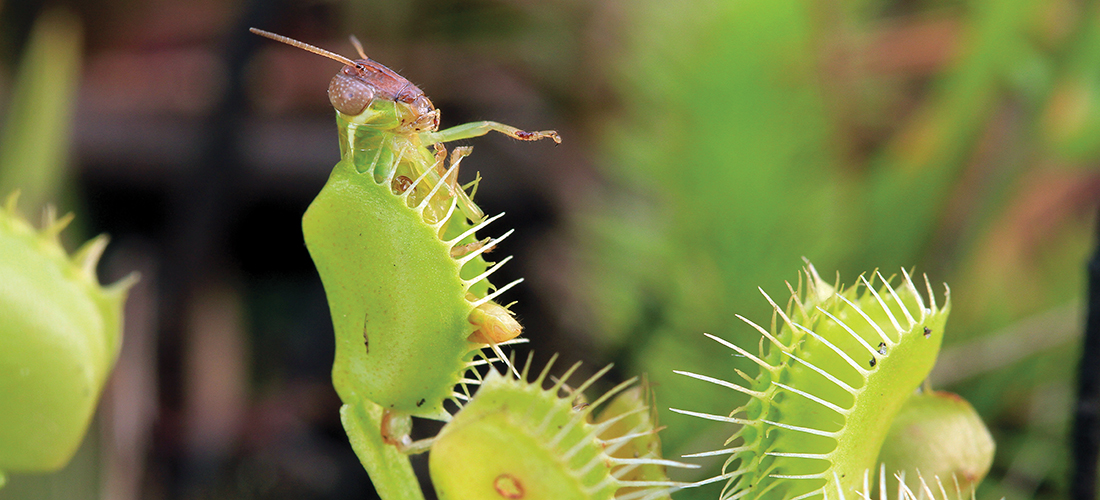
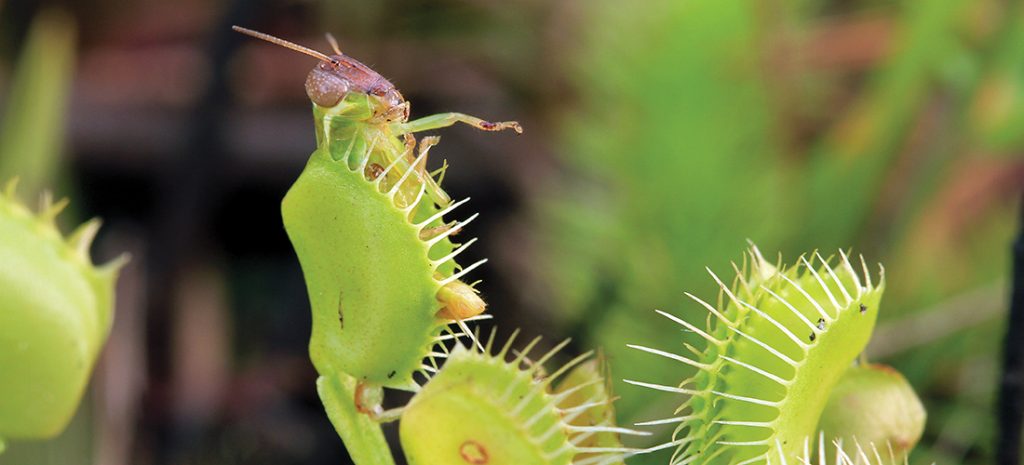
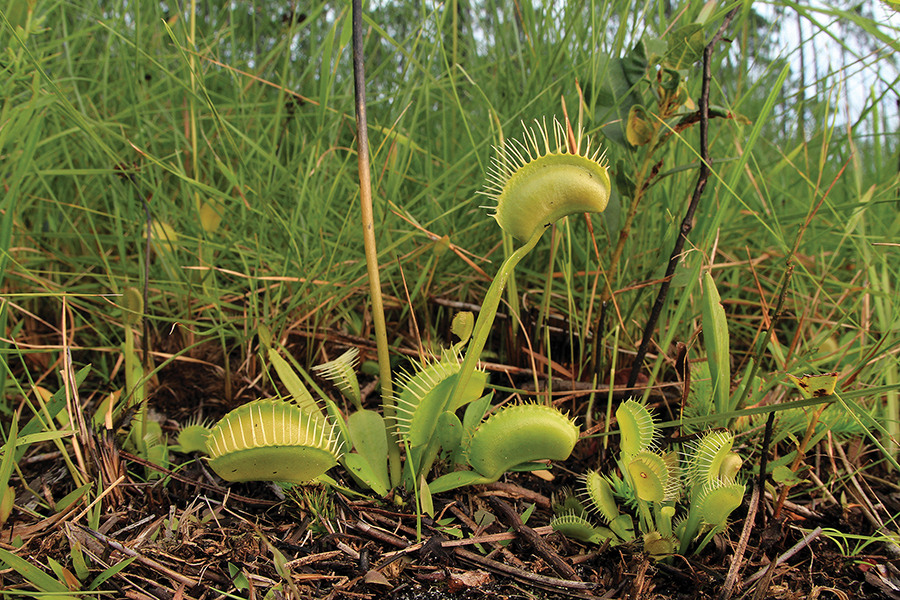
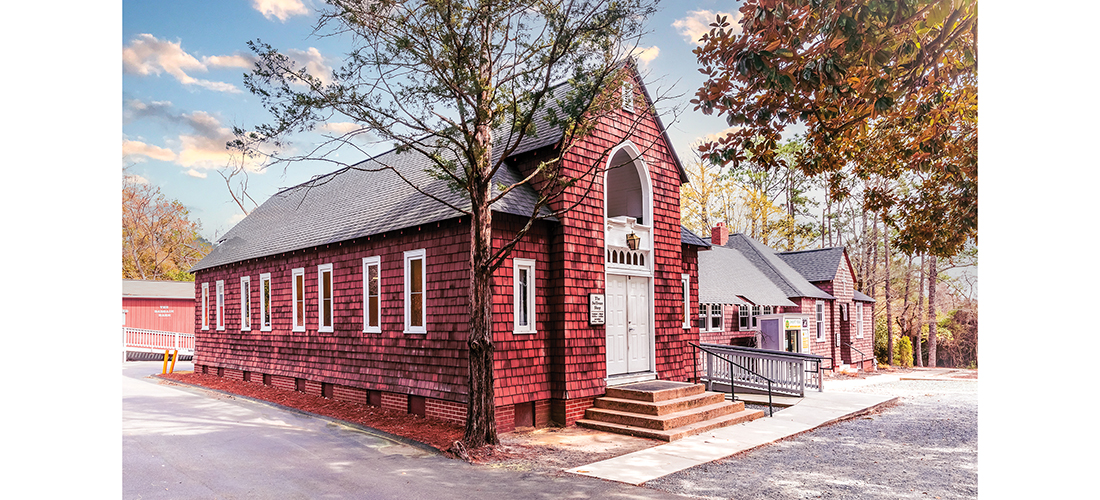
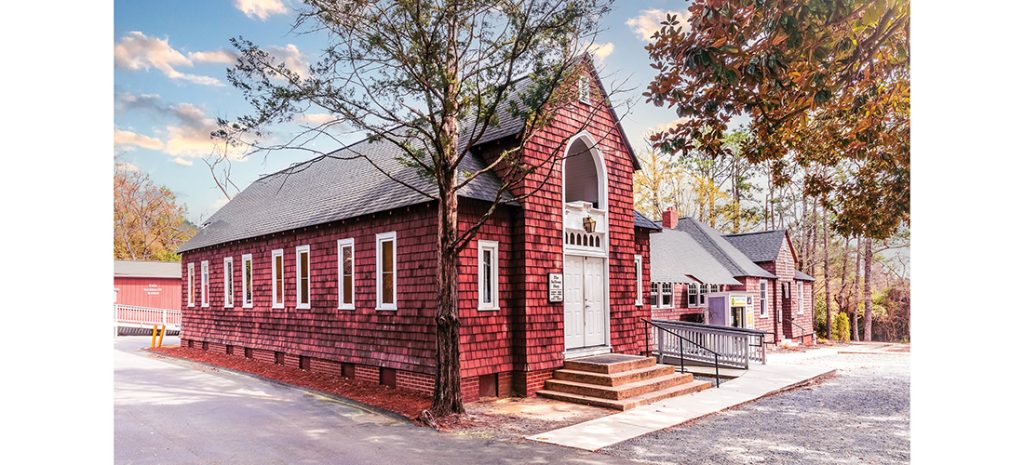


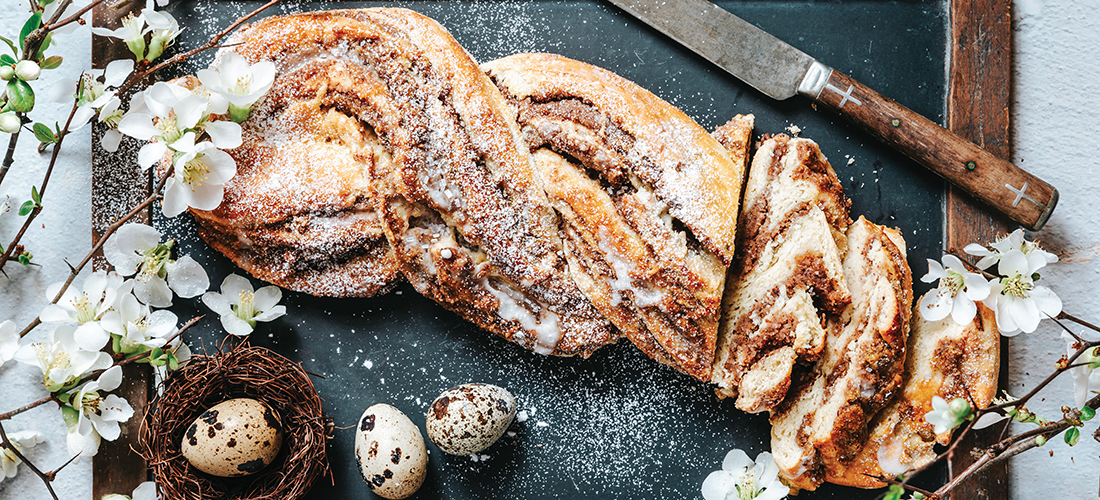
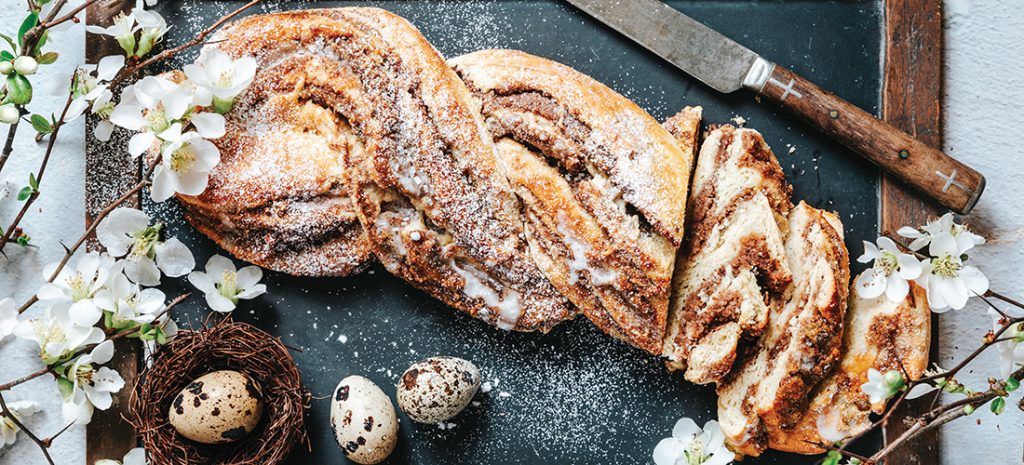
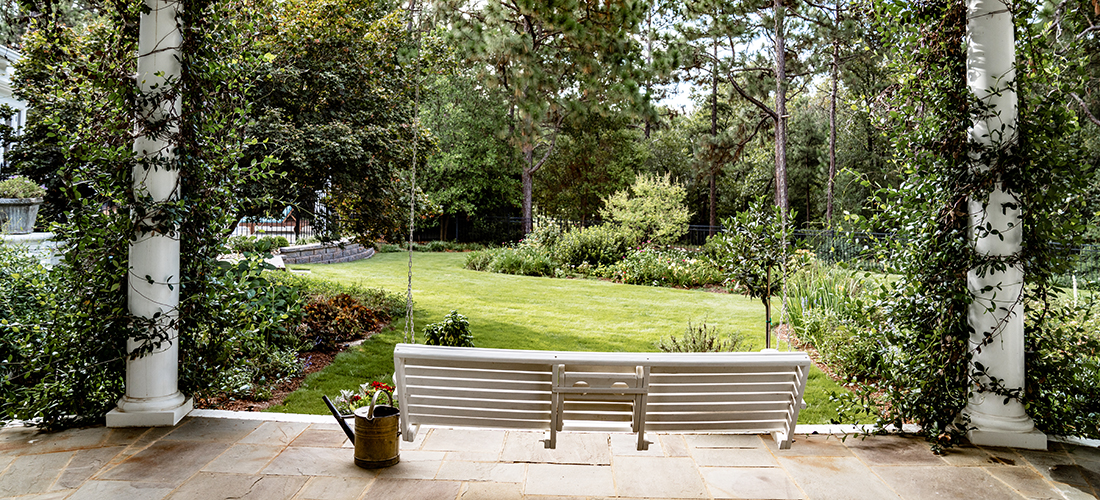




 .
.




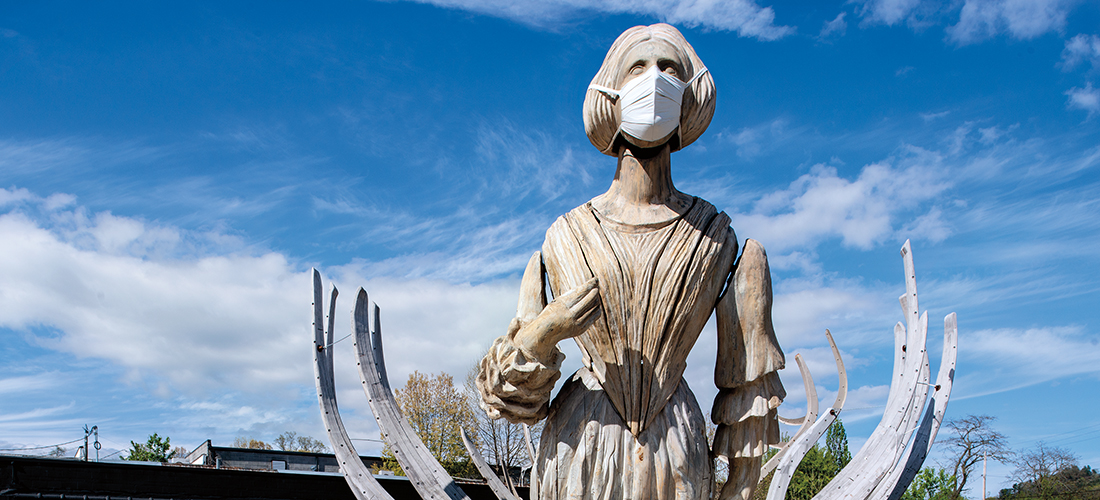
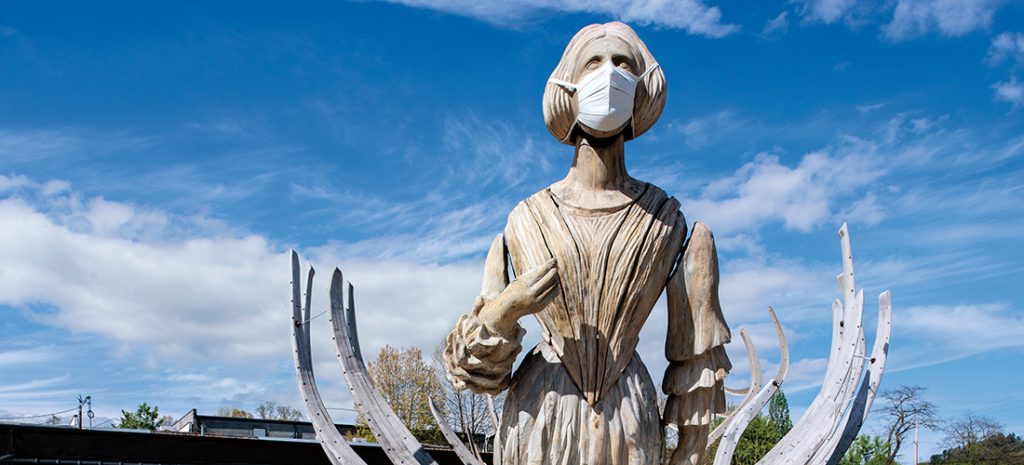


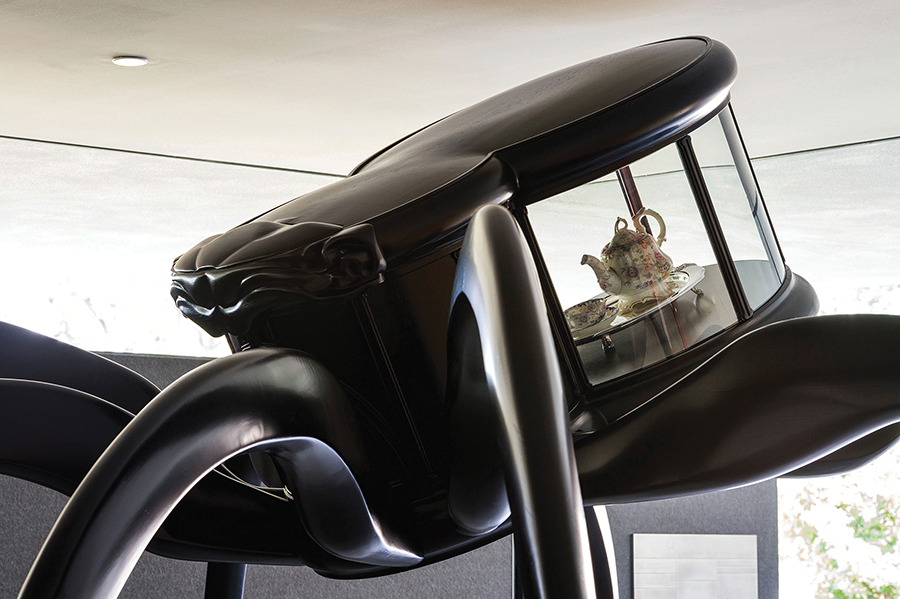
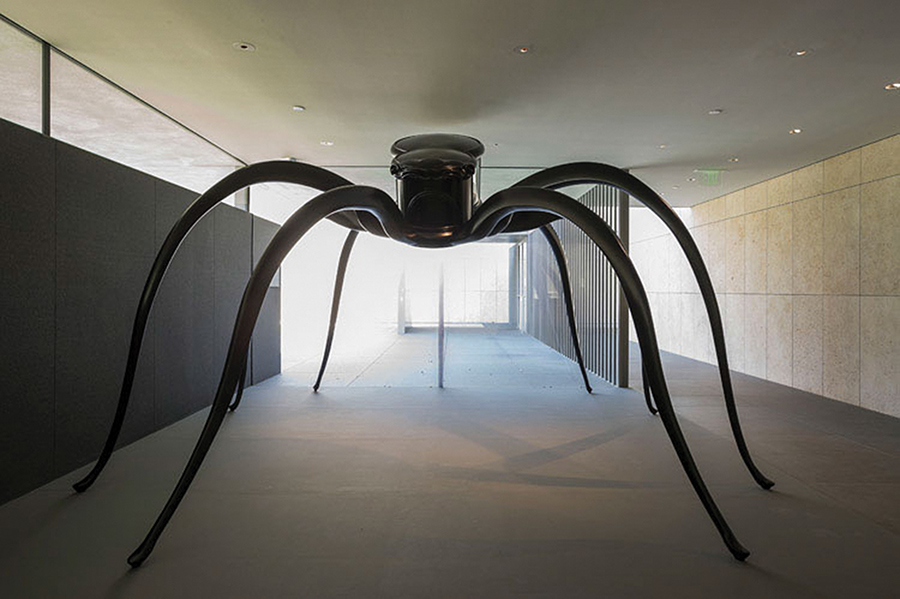







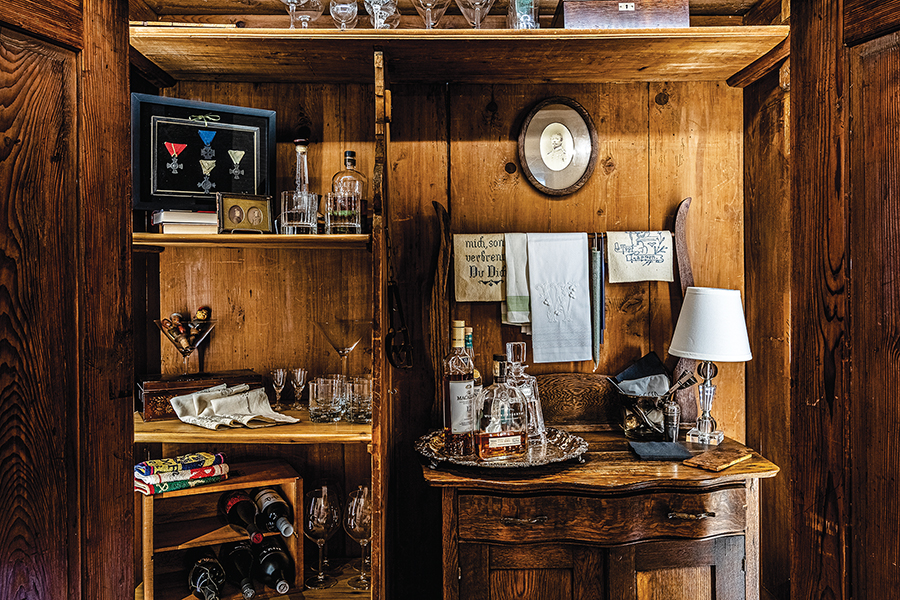







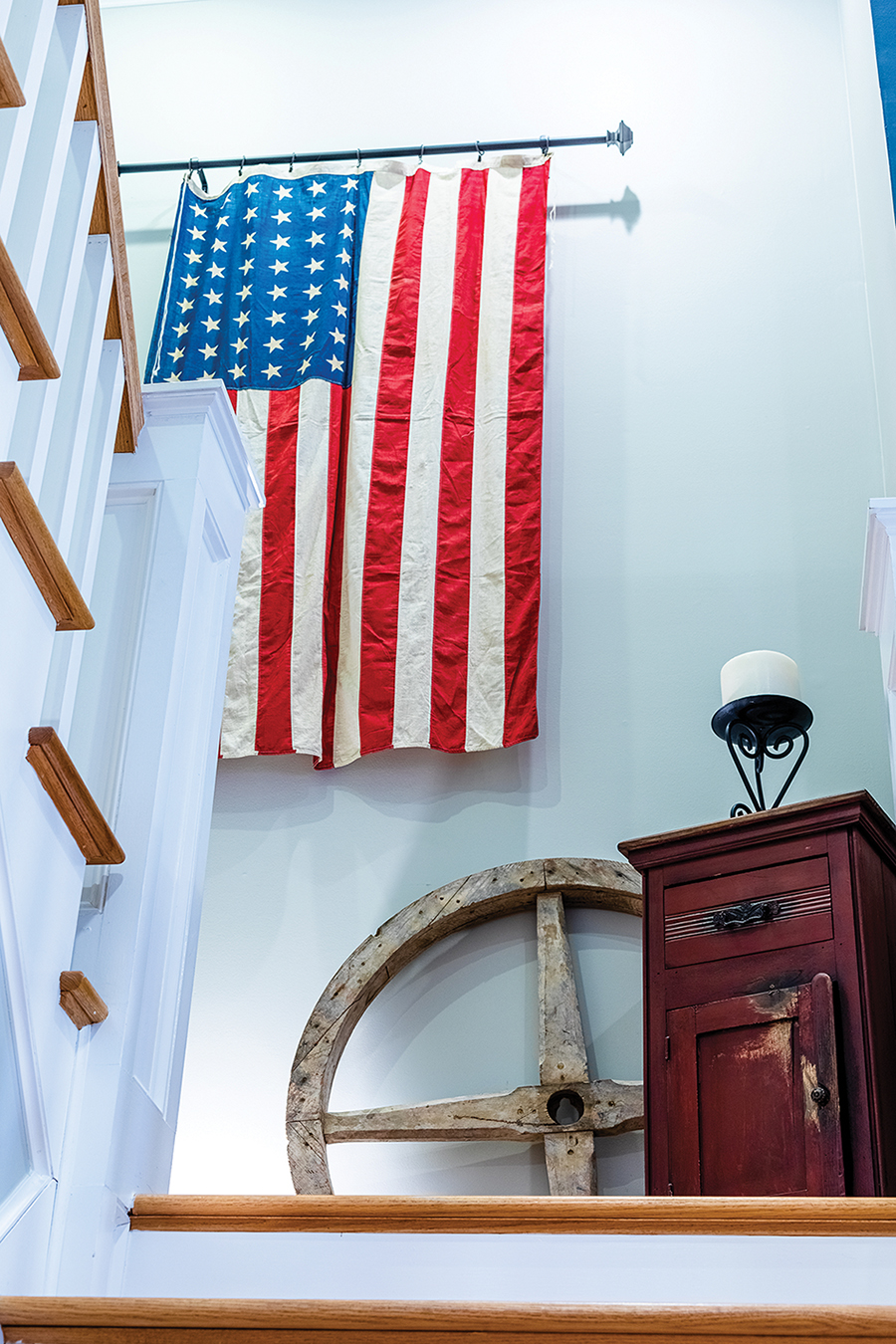



 E
E






